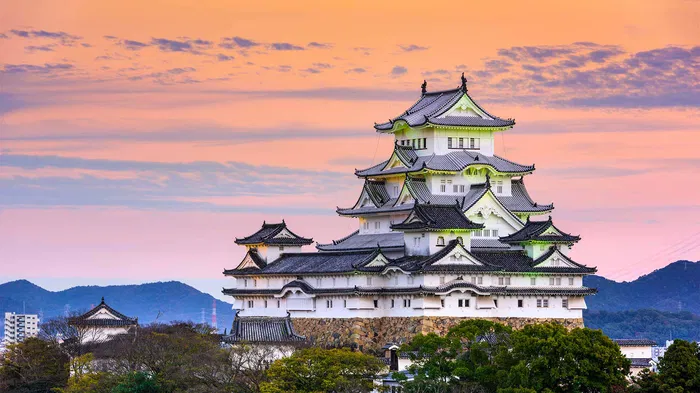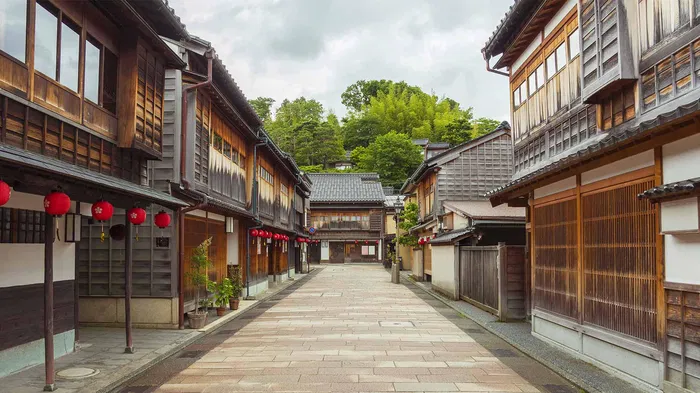Yuzu is a bit of a buzzword these days, becoming better known around the world as a tangy hit of vitamin C and tart flavors, but, really... What is yuzu?
The yuzu citrus is a cross between a lemon and an orange. Originally from the Yangtze River region in China, it was introduced to Korea and then Japan during the Nara Period (710-794). Today, Japanese yuzu is the most common type of yuzu.
It takes ten years for a seed to become a ripe yuzu fruit. Yuzu can resist the cold better than most fruits, which is why it can even grow in the cold Tohoku region.
Watch: See how oysters and wine are supporting Tohoku!

When are yuzu fruits harvested?
Yuzu trees are harvested in autumn when the fruit is ripe, usually from October until the start of winter. Unripe green yuzu named ao-yuzu can also be harvested in July. Its pulp is acidic and filled with seeds.
Only 18% of the fruit is juice, which is why yuzu rind is more commonly used in cooking. It contains 4.5% citric acid, three times more than a regular lemon. Derived products such as yuzu juice, vinegar, paste, dehydrated yuzu powder, and frozen yuzu puree can be found in Asian groceries. It even exists in candy, tea, and cosmetics!
Read more about Japan's love for fruit: The Definitive Guide to Japanese Fruits
Yuko: a variety of yuzu
This variety of yuzu is native to the Doinokubi and Sotome regions of Nagasaki. When the yuko fruit is ripe, it has a bright yellow color. The rind and the inside of the fruit are edible and have a “sharp and well-rounded flavor” akin to the pomelo. The yuko has a sweet smell. It is most notably used in vinegared side dishes and to flavor sardines.
The fruit played a part in Nagasaki’s history. During the Edo period, a lot of European missionaries entered Japan through Nagasaki's port. These missionaries converted some Japanese to Christianity until the religion was banned by the Edo authorities. Still, some Japanese continued to practice Christianity in hiding. At that time, it is said that French missionary Marc Marie de Rotz cultivated the region's yuko to feed the impoverished population of Nagasaki.
In the middle of the 19th century, the yuko almost became extinct. That is because local farmers started expanding their fields, and large residential projects were constructed in zones where yuko trees grew. Fruits were being mass-produced and locals didn’t need the locally produced yuko as much. The yuko was forgotten.
In the 20th century, the people of Nagasaki rediscovered the fruit as it was on the verge of extinction. To keep it from disappearing, locals organized a tree-planting festival. To this day, the yuko is naturally produced in the region. It is used in different local dishes according to its thickness, size and flavor.
How to cook with yuzu?
In Japan, this citrus is used to flavor soups, hot pots, and steamed dishes. A yuzu sauce called ponzu is made out of soy sauce and yuzu. Unripe green yuzu is used to make yuzu kosho (yuzu salt). It is made out of thinly cut green yuzu, green chili, and salt. This specialty of the Kyushu region is used to flavor soba and salads.
Yuzu gama is another dish that uses the yuzu fruit. The top part of the fruit is cut off and the insides of the fruit are scooped up so that a small side dish can be fitted into the fruit. The fruit is used as a bowl, beautifully presenting a dish. It gives off a nice aroma which coats the food inside it. Yuzu-gama is typically served during oshogatsu ( Japanese New Year) and in traditional Japanese kaiseki cuisine.
In Korea, yuja cha (yuzu tea) is a tea made out of whole yuzu, sugar and water. Whole fruits without seeds are chopped finely and mixed with sugar. This preservation technique — called cheong — allows the yuzu to be preserved for months. Ginger and honey can also be added. This sort of yuzu jam is then mixed with hot or cold water to create a delicious, sweet and fragrant drink. Perfect for winter, it's a great remedy for colds and sore throats.
Find out more: Popular Japanese Drinks
Australian-Japanese restaurant Kobe Jones suggests using a drop of yuzu in cocktails to give them a nice bitter and citrusy taste. It accompanies oysters well and can be combined into marinades, mayonnaise, and brunoise (a garnish made of finely chopped vegetables).
Yuzu baths
In Japan, it is common to take a yuzu bath during the winter solstice. Whole yuzu fruits or yuzu rinds are added to the bath water. The yuzu has many benefits for the body. Its relaxing fragrance stimulates blood circulation leaving you relaxed. It is customary to take part in purification rituals such as baths to cleanse and purify yourself. This wards off evil and brings in good fortune.
According to legend, you won’t catch a cold if you take a yuzu bath on the day of the winter solstice. This belief probably stems from the word winter solstice (touji, 冬至), which is pronounced the same as the word 湯治, which means to enter an onsen, a Japanese hot spring. The fruit's citric acid and vitamin D improve the skin's complexion. Onsen in Shikoku are filled with the region's abundant yuzu.
This famous fruit can be encountered in many Japanese dishes, meaning you’ll find it in many of our food tours and cooking classes in Japan!
Tokyo yakitori and ramen tour in Shinjuku
Join a ramen expert and try some of Tokyo’s best noodles. While ramen on its own can make a hearty meal, why stop there? This tour will also bring you to Tokyo’s finest yakitori (grilled chicken skewer) restaurants where you can mingle with local yakitori fans.
Yakitori can be enjoyed on its own, but with a little sprinkling of yuzu kosho (yuzu pepper), it reaches new heights!
Premium omakase tempura course meal at Tempura Ono

Tempura Ono has some of the most popular, high-quality tempura course menus in Tokyo, with omakase (chef’s choice) dishes and sake pairings personalized to your tastes and dietary requirements. Indulge in 10-13 dishes that vary by the season — or even by the day — and look out for winter exclusives like their fresh, tangy yuzu salad.
Vegan or vegetarian tempura: Mention your dietary preferences at the time of booking for a course menu suited to your needs.
Seasonal Japanese home cooking class in Kyoto
Join an authentic Japanese home cooking class in Kyoto and make a seasonally inspired lunch with a local pro. Since the ingredients are freshly chosen for each season, join this class in the winter for yuzu-based dishes. Previous winter-themed menus have included yuzu-flavored fried chicken, yuzu daikon (radish), and spinach and grilled shiitake mushrooms with yuzu soy dressing. It’s a citrus sensation!
Watch: Local inaka sushi (countryside sushi) cooking class in Kochi

For a taste of the local food culture of Kochi Prefecture, learn how to make inaka sushi (countryside sushi) during this sushi cooking class in Kochi! Alongside the vegetarian and vegan-friendly sushi on display, including toppings like simmered shiitake mushrooms and ginger, you may also use local yuzu juice and zest for a splash of citrus tartness.
Sakura chiffon cake workshop in Tokyo (with yuzu flavors!)
Learning how to bake a cake in Tokyo — does it get any better than that? Not when you join this one-day workshop to make a fluffy, sakura-themed chiffon cake it doesn’t. You’ll learn to bake, decorate, and photograph this delicately decadent dessert with your choice of flavors, such as matcha (green tea), cocoa, black tea, sakura, strawberry, and — you guessed it — yuzu!
Distillery tour and gin tasting in Asahikawa, Hokkaido
Become an expert in Japanese gin production and tasting in this distillery tour and gin-tasting experience in Hokkaido. Each gin is an entirely new world of flavors, influenced by the botanicals, spices, and fruits infused with alcohol. But, since we’re all about the yuzu right now, see if you can persuade the tour guide to break out the yuzu-infused gin!
Yuzu shabu-shabu
For those times when you want a hearty, filling meal that somehow feels nostalgic, even if it’s your first time trying it, explore Tokyo’s shabu-shabu restaurants! You may even find some that offer yuzu hot pots, using Japan’s famous citrus fruit to add a new flavor to your shabu-shabu.
From cooking to Japanese baths, yuzu has a variety of uses and forms. This very versatile ingredient can replace any citrus. Get it from your local Asian supermarket to give your cooking a Japanese kick!
New to Japanese food? Start learning about all the best traditional Japanese foods out there, from miso, wasabi and natto to tsukemono pickled veg and omakase sushi in Tokyo.
Editor's note: This blog was first written by Yan Lasnier and updated by the byFood team in February 2025.
 Tokyo
Tokyo Osaka
Osaka Kyoto
Kyoto Hyogo
Hyogo Hokkaido
Hokkaido Nara
Nara Fukuoka
Fukuoka Hiroshima
Hiroshima Kanagawa
Kanagawa Ishikawa
Ishikawa Florence
Florence Paris
Paris Rome
Rome Porto
Porto Barcelona
Barcelona New York
New York Venice
Venice Madrid
Madrid Marrakesh
Marrakesh Istanbul
Istanbul